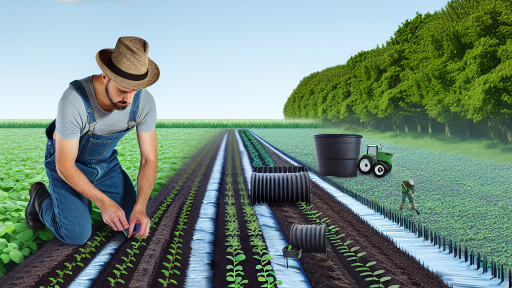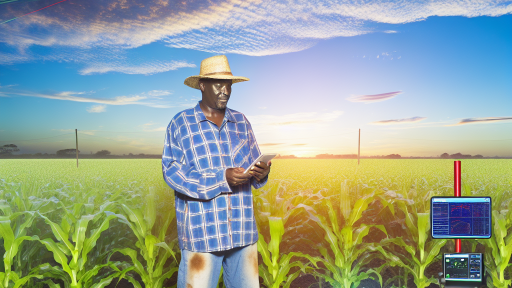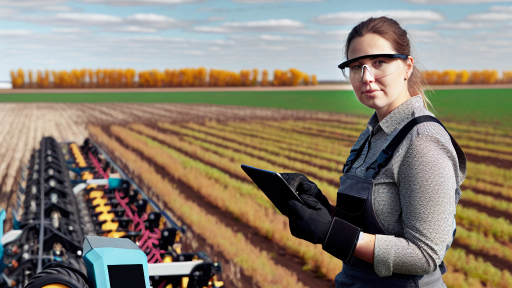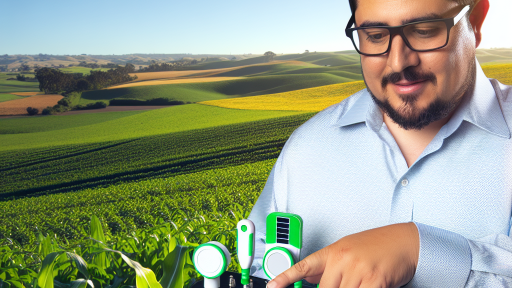Introduction to Agri-Robotic Solutions and Their Importance
Agri-robotic solutions play a vital role in modern agriculture.
They enhance efficiency and productivity in farming operations.
These technologies address labor shortages and rising costs.
Farmers increasingly rely on automation to optimize their workflows.
Robots can perform various tasks, such as planting and harvesting.
Understanding the Benefits of Agri-Robotic Solutions
One significant benefit is the precision of agricultural activities.
Precision minimizes waste and maximizes output.
Moreover, robots can operate in harsh conditions, improving resilience.
They facilitate the use of data analytics in farming.
This data-driven approach helps make informed decisions.
Types of Agri-Robotic Solutions
Several types of agri-robotic solutions exist in agriculture today.
Autonomous tractors assist with planting and tilling efficiently.
Harvesting robots can pick fruits and vegetables without damaging crops.
Drones assist in monitoring crop health from the sky.
Weed-control robots target unwanted plants, reducing herbicide use.
Transform Your Agribusiness
Unlock your farm's potential with expert advice tailored to your needs. Get actionable steps that drive real results.
Get StartedChallenges and Considerations in Adoption
Despite their advantages, adopting agri-robotic solutions poses challenges.
Initial investment costs can be high, deterring some farmers.
Additionally, training staff to operate robotic systems is essential.
Compatibility with existing farm equipment can also be a concern.
Farmers must evaluate whether these technologies fit their specific needs.
The Future of Agri-Robotic Solutions
The future of agri-robotics looks promising and innovative.
Emerging technologies, such as artificial intelligence, will enhance capabilities.
These advancements will lead to further efficiency and sustainability.
Collaborations among tech firms and agricultural experts will grow.
Ultimately, more farmers will embrace agri-robotics to stay competitive.
Key Factors to Consider When Choosing Agri-Robots
Understanding Your Agricultural Needs
Identify the specific tasks you want the agri-robot to perform.
Consider the size of your farm and types of crops.
Evaluate your labor requirements and availability.
Evaluating Technology and Features
Examine the technology integrated into the agri-robot.
Look for features that enhance efficiency and productivity.
Check the compatibility with existing farming equipment.
Assessing Cost and Budget
Establish a clear budget for your investment in agri-robots.
Compare initial costs against potential long-term savings.
Consider ongoing maintenance and operational costs.
Researching Manufacturers and Suppliers
Investigate reputable manufacturers known for quality products.
Review customer feedback and ratings for insights.
Engage with suppliers to understand their support services.
Prioritizing Ease of Use and Training
Choose robots that come with user-friendly interfaces.
Determine the level of training required for your team.
Showcase Your Farming Business
Publish your professional farming services profile on our blog for a one-time fee of $200 and reach a dedicated audience of farmers and agribusiness owners.
Publish Your ProfileConsider the availability of support and resources for training.
Evaluating Scalability and Upgradability
Assess whether the robot can scale with your operations.
Look for models that allow for future upgrades and enhancements.
Ensure the technology evolves alongside industry standards.
Considering Environmental Impact
Investigate how the agri-robot contributes to sustainable farming.
Evaluate its energy efficiency and carbon footprint.
Ensure compliance with environmental regulations and standards.
Types of Agri-Robots
Introduction to Agri-Robotics
Agri-robots enhance farming efficiency and productivity.
They perform tasks that traditionally require human labor.
These robots leverage advanced technologies for various applications.
Autonomous Tractors
Autonomous tractors use GPS and sensors for navigation.
They manage tasks like plowing and planting accurately.
These machines reduce labor costs significantly.
Consequently, they increase overall farm productivity.
Robotic Harvesters
Robotic harvesters efficiently gather crops from fields.
They minimize damage to the produce during collection.
These robots typically use computer vision to locate ripe crops.
As a result, they enhance the quality of harvested goods.
Weeding Robots
Weeding robots target and remove unwanted plants effectively.
They often utilize advanced sensors to distinguish between crops and weeds.
These machines can operate autonomously without human intervention.
Thus, they significantly decrease herbicide usage.
Drones for Agriculture
Drones play a vital role in modern agriculture.
They provide real-time data on crop health and field conditions.
Farmers can use this information for precision farming.
Utilizing drones can lead to better resource management.
Livestock Monitoring Robots
Livestock monitoring robots track animal health and behavior.
These robots gather data to identify potential health issues early.
They facilitate improved livestock management practices.
Moreover, they enhance overall productivity and welfare of animals.
Choosing the Right Agri-Robot
Selecting the appropriate agri-robot depends on specific needs.
Farmers must evaluate the scale and type of their operations.
Additionally, they should consider the technological capabilities of each robot.
Expert advice can greatly assist in making informed decisions.
You Might Also Like: Enhancing Crop Monitoring with Precision Agriculture
Evaluating the Return on Investment (ROI) of Agri-Robots
Understanding ROI in Agriculture
ROI measures the profitability of an investment.
In agriculture, it evaluates the benefits of implementing agri-robots.
Farmers must consider both costs and savings.
Higher yields result from enhanced efficiency and productivity.
Initial Costs of Agri-Robotic Solutions
Initial costs include equipment purchase and installation.
Showcase Your Farming Business
Publish your professional farming services profile on our blog for a one-time fee of $200 and reach a dedicated audience of farmers and agribusiness owners.
Publish Your ProfileTraining staff also incurs expenses during implementation.
Maintenance and support fees can add to the overall investment.
However, these startup costs often lead to significant long-term savings.
Operational Efficiency and Productivity Gains
Agri-robots streamline various farming tasks.
They automate planting, harvesting, and monitoring crops.
As a result, labor costs decrease significantly.
Additionally, robots operate consistently, reducing the risk of human error.
Potential Increases in Crop Yields
Investing in agri-robots often leads to higher crop yields.
More precise applications of water and nutrients foster better plant health.
This efficiency contributes to overall profitability for farmers.
Long-Term Financial Benefits
Over time, agri-robots can enhance the overall financial sustainability of farms.
Having a reliable workforce reduces dependency on seasonal labor.
Moreover, consistent robot operation increases production capacity.
Farmers often see a quicker return on their investments than expected.
Evaluating Environmental Benefits
Agri-robots usually promote sustainable practices in farming.
By optimizing resources, they reduce waste and environmental impact.
Innovative technologies can further improve soil health and biodiversity.
This ecological balance enhances long-term farm viability.
Making Informed Investments
Farmers should analyze their specific needs and challenges.
Comparing various agri-robot solutions helps identify the best fit.
Researching user feedback and ROI case studies provides additional insights.
A well-informed decision maximizes investment potential and farm efficiency.
Find Out More: Sustainable Energy Planning for Future-Focused Farms
Integration and Compatibility with Existing Farm Equipment
Understanding Current Equipment Needs
Assessing your current farm equipment is essential for meaningful integration.
Evaluate the age, functionality, and efficiency of your machines.
Consider how the new robotic solutions will complement your existing tools.
Moreover, understanding compatibility ensures smoother operations.
Exploring Compatibility Requirements
Compatibility goes beyond physical dimensions; it includes software integration.
Check if agri-robots can connect with your farm management systems.
Vendor specifications can guide you in this process.
Furthermore, pay attention to communication protocols used by your devices.
This step can prevent operational disruptions during implementation.
Benefits of Seamless Integration
Seamless integration enhances operational efficiency significantly.
Farmers can enjoy streamlined workflows and reduced downtime.
This also maximizes the return on investment for your equipment.
Additionally, reliable data communication improves decision-making processes.
Identifying Leading Vendors
Research top vendors to understand their integration capabilities.
Compare reviews and case studies from other farms.
Consult industry experts for recommendations on compatible solutions.
Moreover, evaluate each vendor’s customer support for after-sales assistance.
Showcase Your Farming Business
Publish your professional farming services profile on our blog for a one-time fee of $200 and reach a dedicated audience of farmers and agribusiness owners.
Publish Your ProfileStep-by-Step Integration Process
Start with a pilot project to test compatibility in real conditions.
Measure the performance of robots alongside existing equipment.
Collect data to refine your integration strategy over time.
Document challenges and successes during this initial phase.
Ultimately, a phased approach allows for adjustments as needed.
Discover More: Robotic Innovations Boosting Farm Efficiency
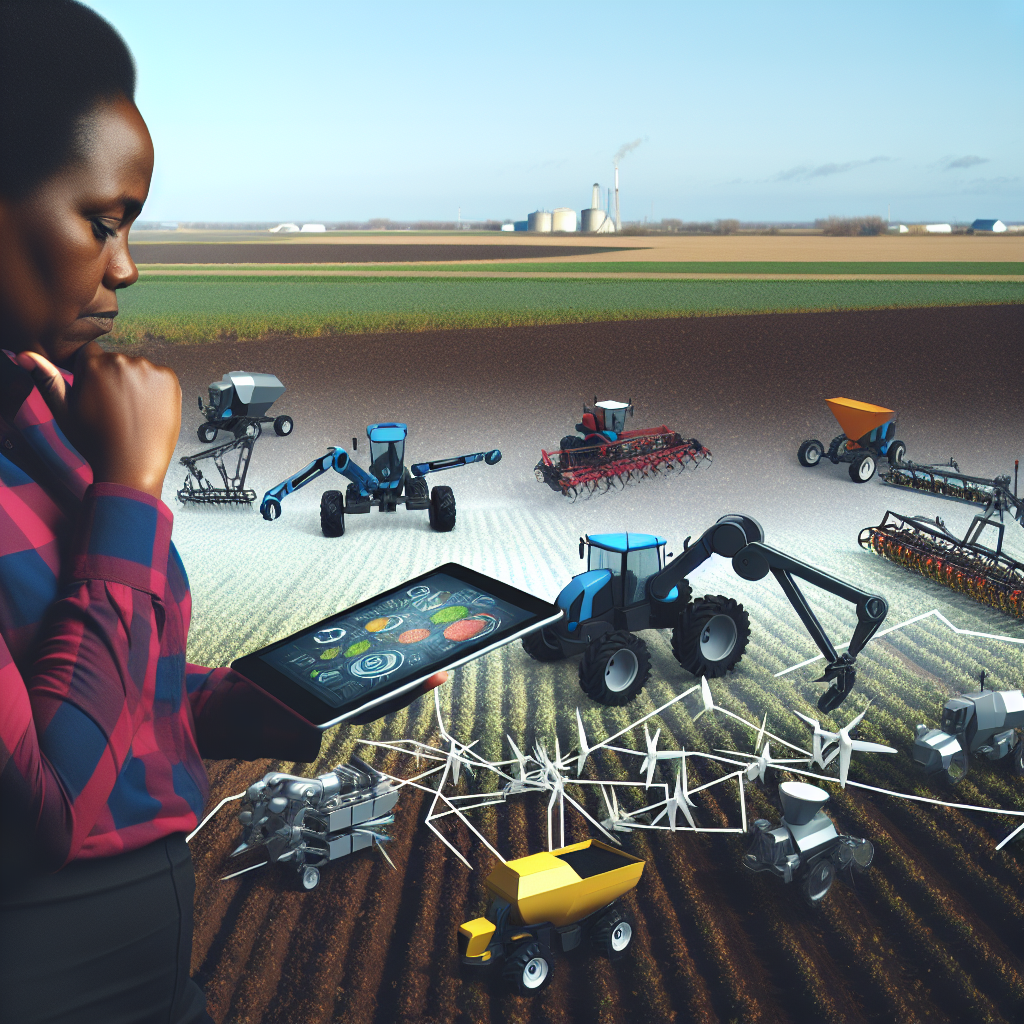
Maintenance and Support: Ensuring Long-term Functionality
Importance of Regular Maintenance
Regular maintenance is crucial for agri-robotic systems.
It helps in preventing unexpected breakdowns.
Moreover, routine checks enhance the lifespan of the equipment.
Be proactive and schedule maintenance sessions frequently.
Training and Support Services
Training staff on proper usage boosts efficiency.
Many suppliers provide training programs for users.
Support services are essential to resolve issues swiftly.
Having access to expert support can minimize downtime.
Choosing Reliable Suppliers
Choose suppliers who offer solid maintenance plans.
Look for companies with a strong reputation in the industry.
Read customer reviews to gauge supplier reliability.
Additionally, ensure they provide technical support in your area.
Monitoring and Upgrades
Implement monitoring systems for optimal performance.
Data analytics can predict maintenance needs effectively.
Regularly assess and upgrade software to enhance functionality.
Staying updated with technological advancements ensures efficiency.
Documenting Maintenance Activities
Keep detailed records of all maintenance activities.
Documenting helps track issues and resolutions over time.
This practice aids in understanding the equipment’s performance.
Additionally, it provides valuable insights for future maintenance.
Delve into the Subject: Sustainable Vertical Farming Operations for Modern Farms
Case Studies: Successful Implementation of Agri-Robotic Solutions
Introduction to Agri-Robotics
Agri-robotics revolutionizes farming practices.
Innovations in technology enhance productivity and sustainability.
Farmers increasingly adopt robotic solutions for efficiency.
Implementation at Green Fields Farm
Green Fields Farm recently integrated an autonomous weeding robot.
This robot significantly reduced labor costs and increased yield.
Additionally, it minimized herbicide usage, promoting environmental health.
The farm reported a 30% decrease in operational costs.
The Experience of HarvestTech Solutions
HarvestTech Solutions implemented drones for crop monitoring.
These drones collect data on crop health and soil conditions.
Farmers can make informed decisions based on real-time information.
The results showed improved crop quality and higher profit margins.
Success Story of Organic Acres
Organic Acres utilized robotic harvesters for their fruit crops.
This solution enhanced harvesting speed and efficiency.
Showcase Your Farming Business
Publish your professional farming services profile on our blog for a one-time fee of $200 and reach a dedicated audience of farmers and agribusiness owners.
Publish Your ProfileLabor shortages became less of an issue.
As a result, their production rates soared by 40%.
Challenges Faced
Implementing agri-robotics isn’t without its challenges.
Initial investment costs can be high for farmers.
Training staff to operate new technologies involves time and resources.
Moreover, technical issues may arise, requiring quick resolution.
The Future of Agri-Robotics in Farming
The future looks promising for agri-robotic solutions.
Advancements are expected in AI and machine learning technologies.
Farmers will benefit from even smarter and more efficient solutions.
These innovations will drive sustainable agricultural practices.
Future Trends in Agricultural Robotics and Innovation
Emerging Technologies
The agricultural sector increasingly embraces automation and advanced technologies.
Robotics is at the forefront of this revolution, transforming traditional farming practices.
Innovations in AI and machine learning enhance robotic capabilities and efficiency.
Furthermore, drones are becoming essential for crop monitoring and analysis.
These technologies allow farmers to make data-driven decisions quickly.
Precision Agriculture
Precision agriculture continues to gain traction among farmers worldwide.
This approach leverages robotics to optimize field-level management.
Robots can collect real-time data on soil health and crop conditions.
Consequently, they support targeted interventions, reducing waste and costs.
This method improves overall crop yield and resource utilization.
Collaboration between Farmers and Technology Companies
Collaborations between farmers and tech companies are on the rise.
Startups are developing tailored robotic solutions to address specific agricultural challenges.
Farmers provide valuable insights to enhance product design and functionality.
This partnership fosters innovation and accelerates the adoption of robotics.
Ultimately, it creates a more efficient and productive agricultural industry.
Sustainability and Environmental Impact
Sustainability is a key consideration in the development of agricultural robotics.
Many solutions focus on minimizing environmental footprints.
Robots can execute tasks with precision, leading to reduced chemical usage.
This approach conserves resources and promotes healthier ecosystems.
Moreover, sustainable practices can improve public perception of agriculture.
The Future Workforce
The integration of robotics will alter the agricultural workforce landscape.
While some traditional jobs may decline, new roles will emerge.
Operators and technicians will be essential for managing advanced robotic systems.
Training programs must adapt to equip workers with necessary skills.
Emphasizing education will prepare the next generation for a tech-driven industry.
Additional Resources
15 Agricultural Robots and Farm Robots You Should Know | Built In

